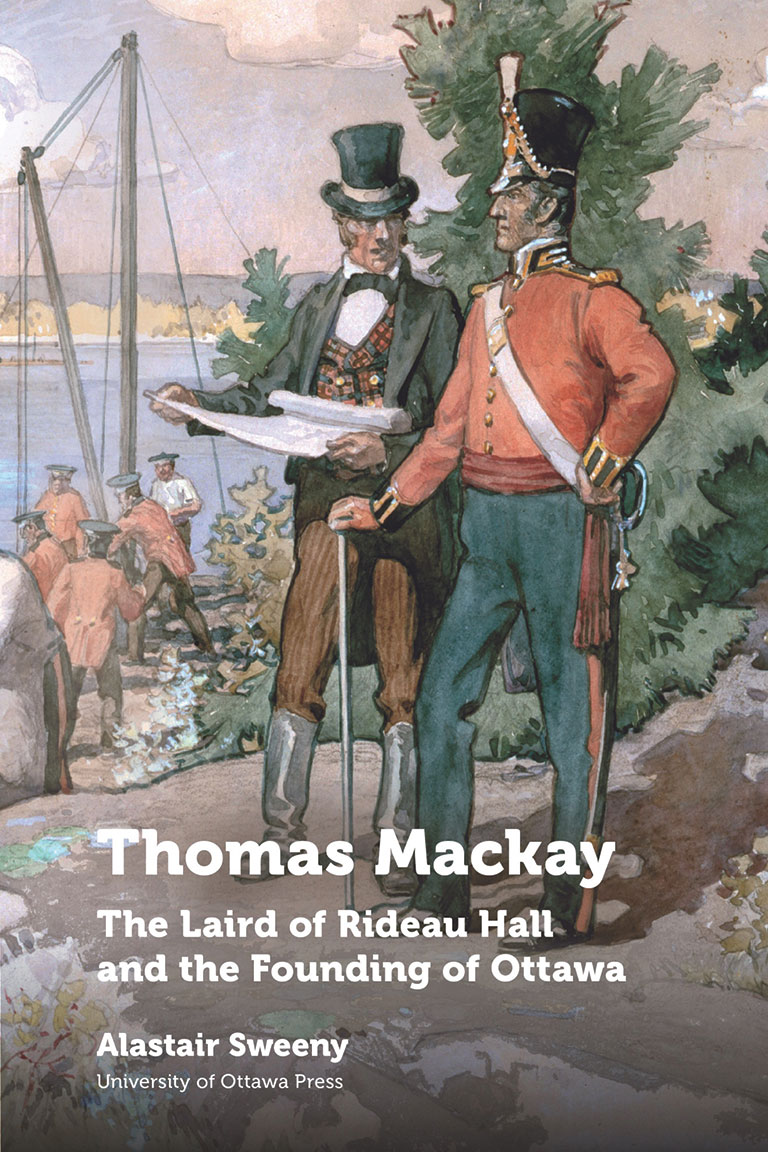Thomas Mackay

Thomas Mackay: The Laird of Rideau Hall and the Founding of Ottawa
by Alastair Sweeny
University of Ottawa Press
408 pages, $39.95
Historian and author Alastair Sweeny spent fifteen years researching the stories of Thomas Mackay — pronounced Mac-eye, rather than Mac-eh — who was an important character in the establishment of the municipality that eventually became Canada’s capital, Ottawa, but that was called Bytown until 1855.
The book is in fact a three-part story — of Mackay’s career as a prominent stonemason and community builder, of the construction of the Rideau Canal, and of the establishment of Rideau Hall and the surrounding Rockcliffe Park neighbourhood. Sweeny’s self-professed “passion project” is brimming with details, references, and carefully curated diagrams and illustrations, despite the relatively thin paper trail Mackay himself left behind.
The names and characters of Mackay’s early associates read like a who’s who of prominent families in both Montreal and Ottawa in the early to mid-1800s. He met many of these people while building the Lachine Canal in Montreal, and together they would work to complete one of the most impressive engineering projects of the nineteenth century, the Rideau Canal.
Sweeny’s account is both meticulous and fascinating. Mackay amassed considerable wealth — paid in Spanish silver pieces, it turns out — while investing in a series of mills, a brewery, and even a political career, as well as railways that he confidently believed would secure Ottawa as an enterprising community worthy of becoming the seat for the new national government of the Canadas.
Mackay’s story is also filled with personal tragedy. His wife had sixteen children, many of whom succumbed to illnesses like smallpox and typhus. Meanwhile, his forays into railways depleted most of his financial resources.
His remaining land and properties were given to his three surviving daughters before eventually being sold to become the Governor General’s residence and the surrounding New Edinburgh and Rockcliffe Park communities. Sweeny’s account of Mackay’s life provides insights into the people and places that shaped the city of Ottawa that stands today.
With 7 uniquely curated newsletters to choose from, we have something for everyone.
We hope you’ll help us continue to share fascinating stories about Canada’s past by making a donation to Canada’s History Society today.
We highlight our nation’s diverse past by telling stories that illuminate the people, places, and events that unite us as Canadians, and by making those stories accessible to everyone through our free online content.
We are a registered charity that depends on contributions from readers like you to share inspiring and informative stories with students and citizens of all ages — award-winning stories written by Canada’s top historians, authors, journalists, and history enthusiasts.
Any amount helps, or better yet, start a monthly donation today. Your support makes all the difference. Thank you!
Themes associated with this article
Advertisement
Save as much as 40% off the cover price! 4 issues per year as low as $29.95. Available in print and digital. Tariff-exempt!




